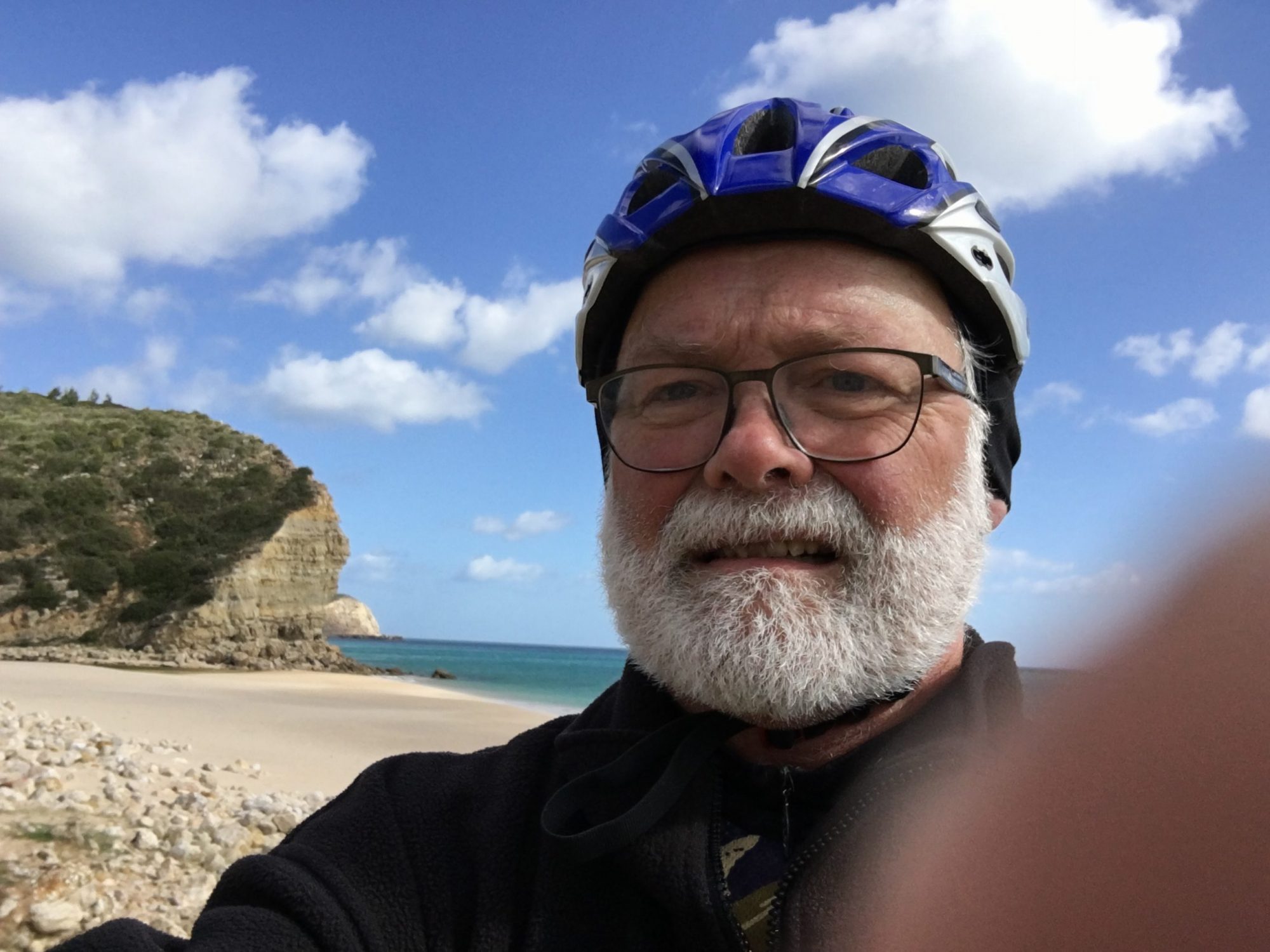My wife Kim will tell you that I am not a big Museum person. Our great challenge in travelling together is that she loves to visit museums, churches, forts. I can participate in such for a while but then I need other activities. Below are the museums I visited in China and one picture from each. They are in order of visit.
My first Museum was in Wuhan and is called Hubei Provincial Museum. Well laid out, good signage in English. Like most larger, general purpose museums in China, it ended with tributes to the great leaders from the Chinese Communist Party.
The star of their collection is this set of Bells from the 5th century BC.
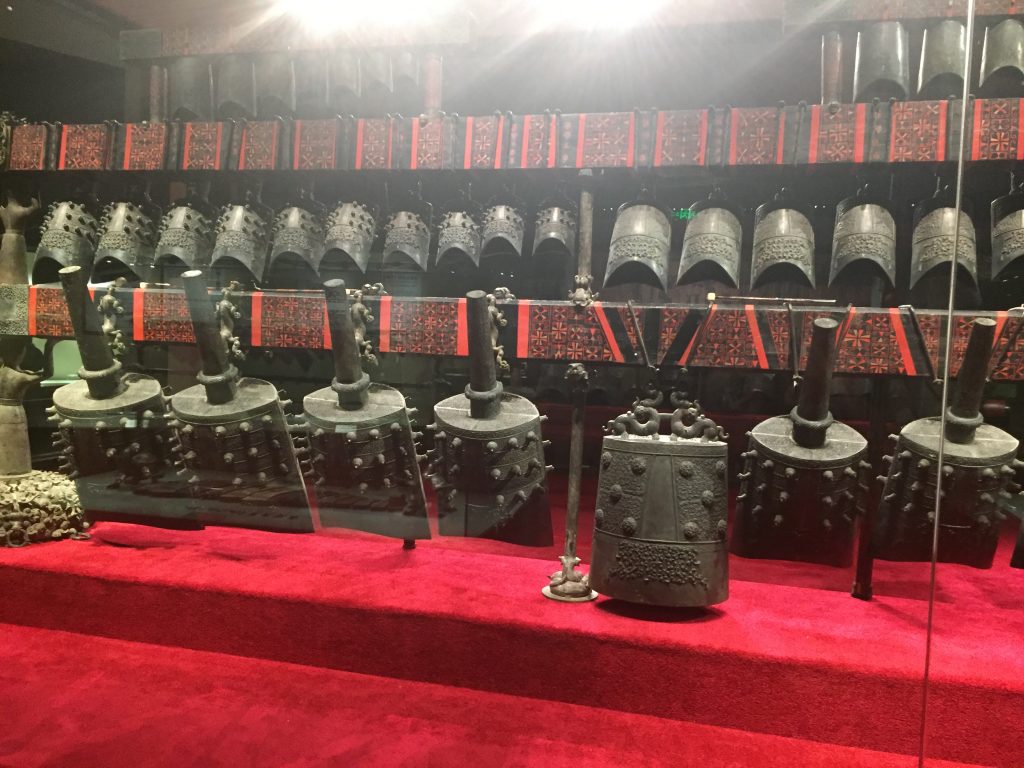 They did a good job talking about how the bells worked, each being able to produce 2? tones, but my knowledge of music is so weak that the explanations really went over my head.
They did a good job talking about how the bells worked, each being able to produce 2? tones, but my knowledge of music is so weak that the explanations really went over my head.
Museum Two, also in Wuhan, is called The Customs House Museum and is housed in a customs house that was built by the Europeans when they controlled the trade of the city.
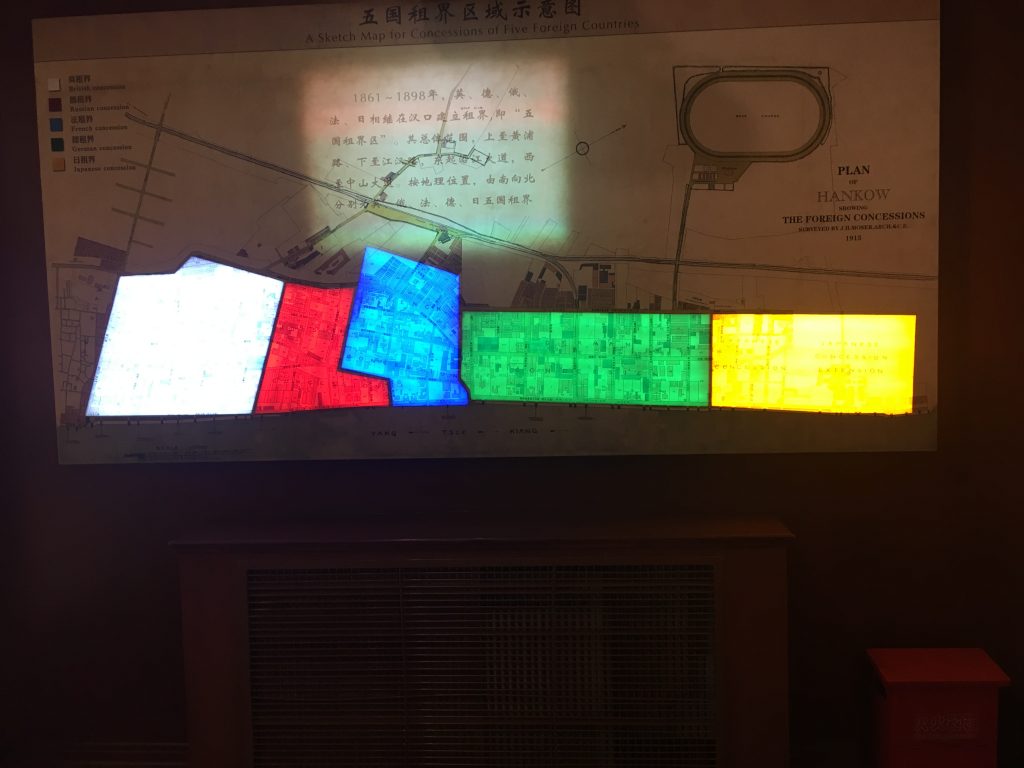 This map from 1913 shows the land, Concessions, given to each country along the river. From the white left to the yellow right they are labeled British, Russian, French, German, Japanese. Wuhan is 5 hours inland from Shanghai by fast train but it is a great trading center for a lot of the Yangtze river. Because China had remained isolated, its armed forces were no match for modern countries and the foreign powers forced China to allow them to develop profitable trade routes. The museum does give the foreign powers some credit for creating economic boom and modernization.
This map from 1913 shows the land, Concessions, given to each country along the river. From the white left to the yellow right they are labeled British, Russian, French, German, Japanese. Wuhan is 5 hours inland from Shanghai by fast train but it is a great trading center for a lot of the Yangtze river. Because China had remained isolated, its armed forces were no match for modern countries and the foreign powers forced China to allow them to develop profitable trade routes. The museum does give the foreign powers some credit for creating economic boom and modernization.
It is a bit of a stretch to call the next location a museum. Ed, the proprietor of my Hotel in Wuyuan, Skywells, refers to it as the Temple at Xinyuan. On my 3d day staying at Skywells, I rode a loaner bike out to Xinyuan. At the end of the town I found what looked like the Temple and soon a woman came running after me and opened the door so I could go inside. No plaques. No English. Lots of bird dung. But an interesting place to see.
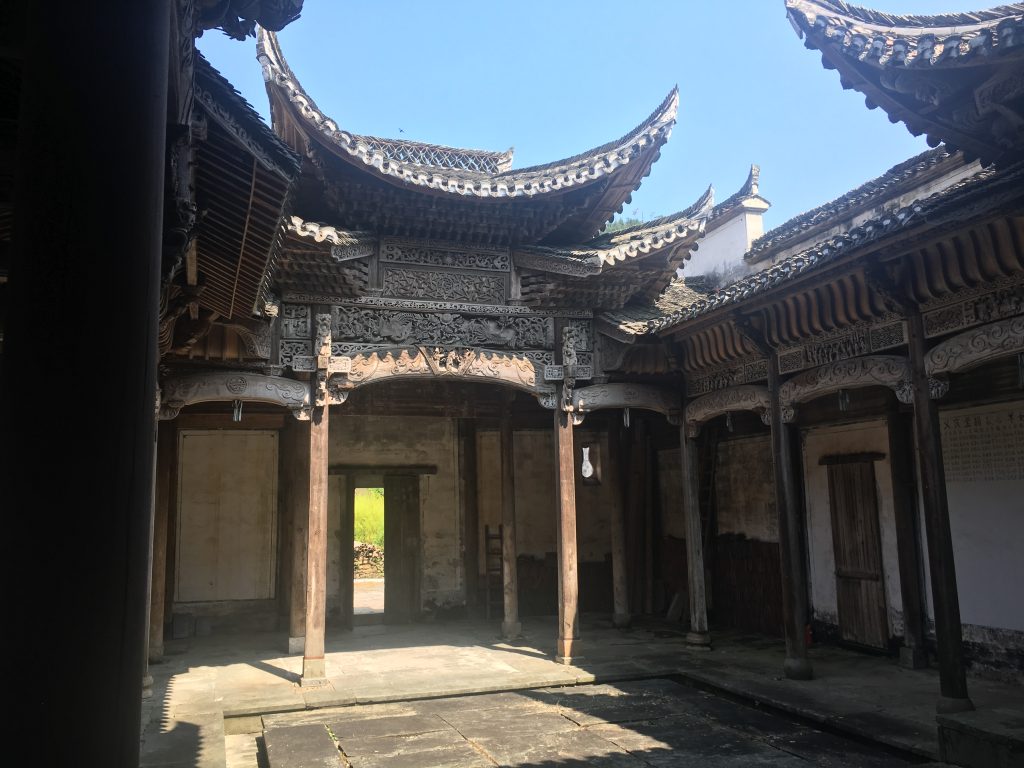
City number 3 for me is called Huizhou Ancient City. Again, I did not go into a real museum. I was thinking of substituting pictures of the food market in this posting but I guess I better stay more to the theme and show you the since replaced local CCP headquarters:
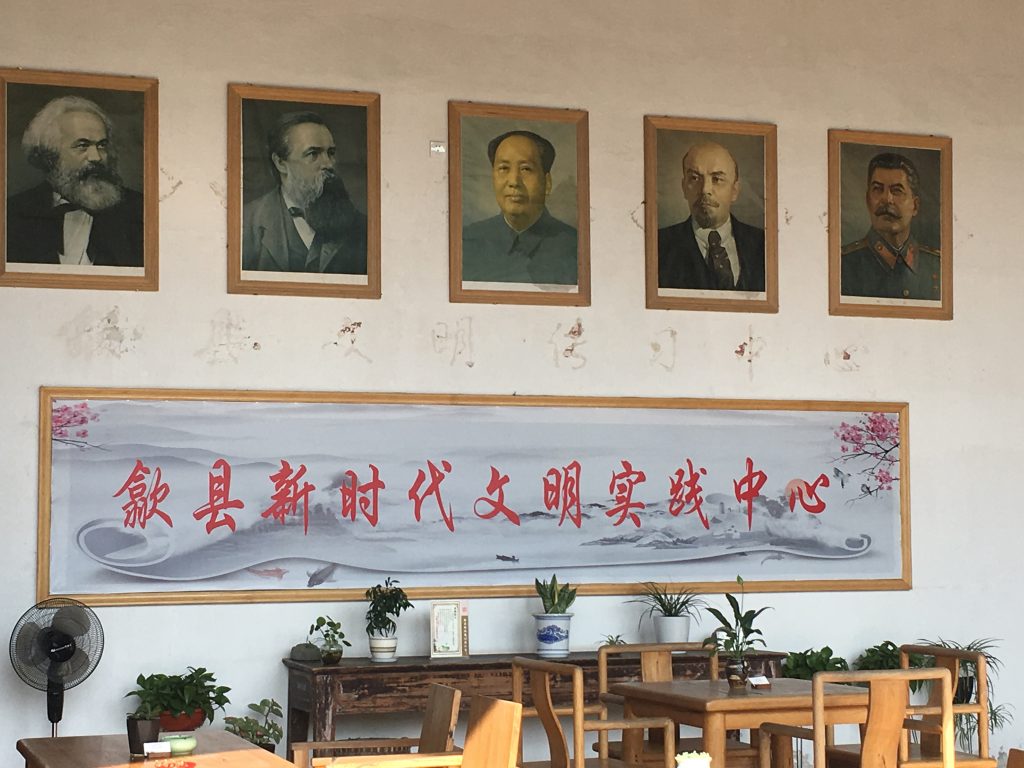 Wendy, the proprietor of my hotel, September Hui zhou Homestay, pointed this wall out to me as we first parked the car from the train and thought that I could identify the people. Marx, Engales, Mao, Trotsky, Stalin.
Wendy, the proprietor of my hotel, September Hui zhou Homestay, pointed this wall out to me as we first parked the car from the train and thought that I could identify the people. Marx, Engales, Mao, Trotsky, Stalin.
Onto Shaoxing and museum city. My hostel was right next to a reconstructed pedestrian street that was packed with what one should really call House Museums. It is even a little hard for me to keep straight what images are from which museums. I was working with 3 phone cameras. Not because I needed 3 cameras, and indeed trying to sort out the correct order of the pictures has taken me a month!, but I am a suspenders and belt person and desired the triple redundancy of the GPS and map functions. Wife Kim has been working on me to say “desired” or “wanted” instead of “needed”!
Qiu Jin’s Former Residence. House museums in China seem to always be a former residence. With no information to back up this idea, I imagine that once prosperity started in 1990?, people looked around for older homes that had not been destroyed in the upheavals, made them into museums and gave them the name of some former resident. Qui Jin was a woman, educated in Japan, and an early supporter of revolutionary parties back in 1902.
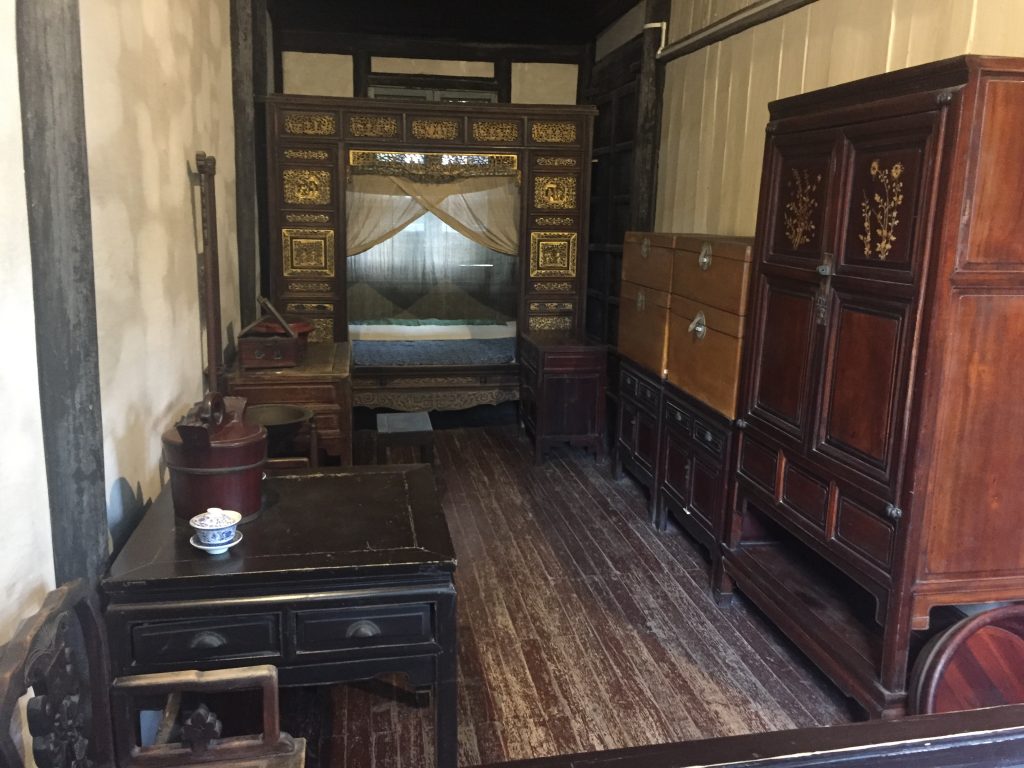 This was kind of a typical bedroom.
This was kind of a typical bedroom.
Lu Xun’s Former Residence. Lu was a famous local writer in the 1910s 1920s.
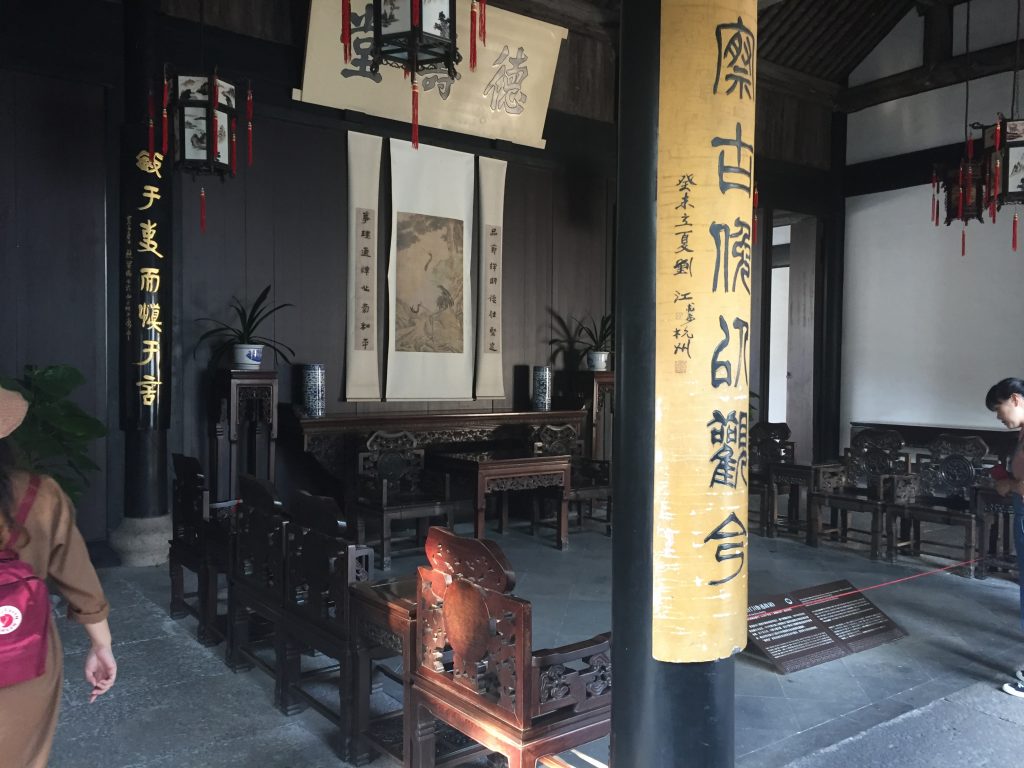 This front room of the house is a layout one sees over and over.
This front room of the house is a layout one sees over and over.
Across the street is Sanwei Shuwu, a collection of school buildings.The master’s quarters and where the students attended lessons. To represent this museum I have selected the tile stone below.
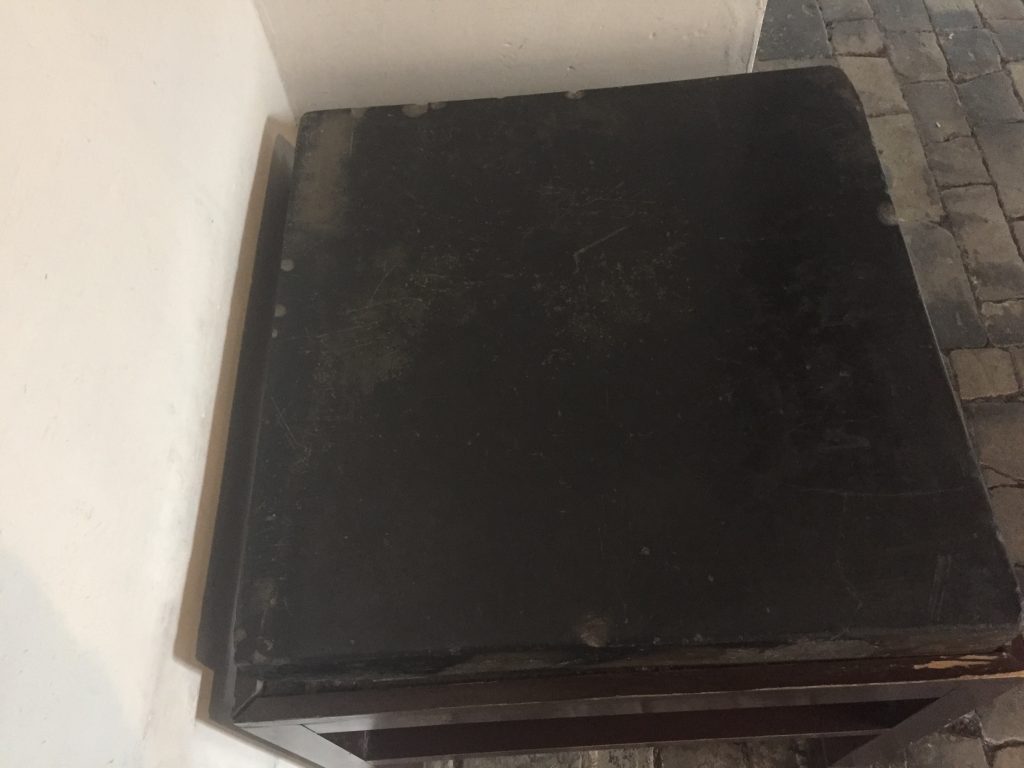 Not very impressive but it was used by the students to practice calligraphy. You can imagine that it was a lot easier to correct mistakes here than on a piece of paper!
Not very impressive but it was used by the students to practice calligraphy. You can imagine that it was a lot easier to correct mistakes here than on a piece of paper!
Bazi Qiao is a 13th century bridge.
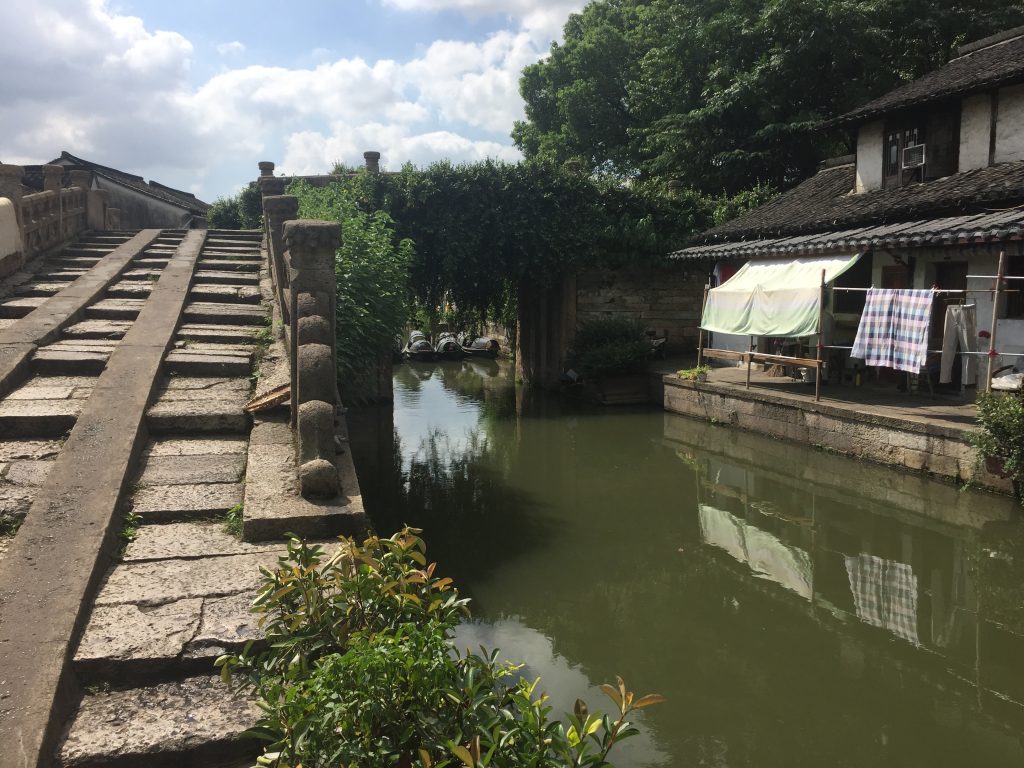 Shaoxing is FILLED with canals and bridges. This oldest one was fun to find, hidden away in back streets.
Shaoxing is FILLED with canals and bridges. This oldest one was fun to find, hidden away in back streets.
Zhou Enlai is a name I was familiar with even back in High School. He was Mao Zedong’s Premier. I remember incorrectly that he studies in Europe. Actually he studied in Japan and did Communist organizing in Europe in 1920-24. The rap was that since he, unlike many other leaders of the CCP at that time, had at least lived in the West, and had a better idea of what was really going on. Shauxing has a “Former Residence”.
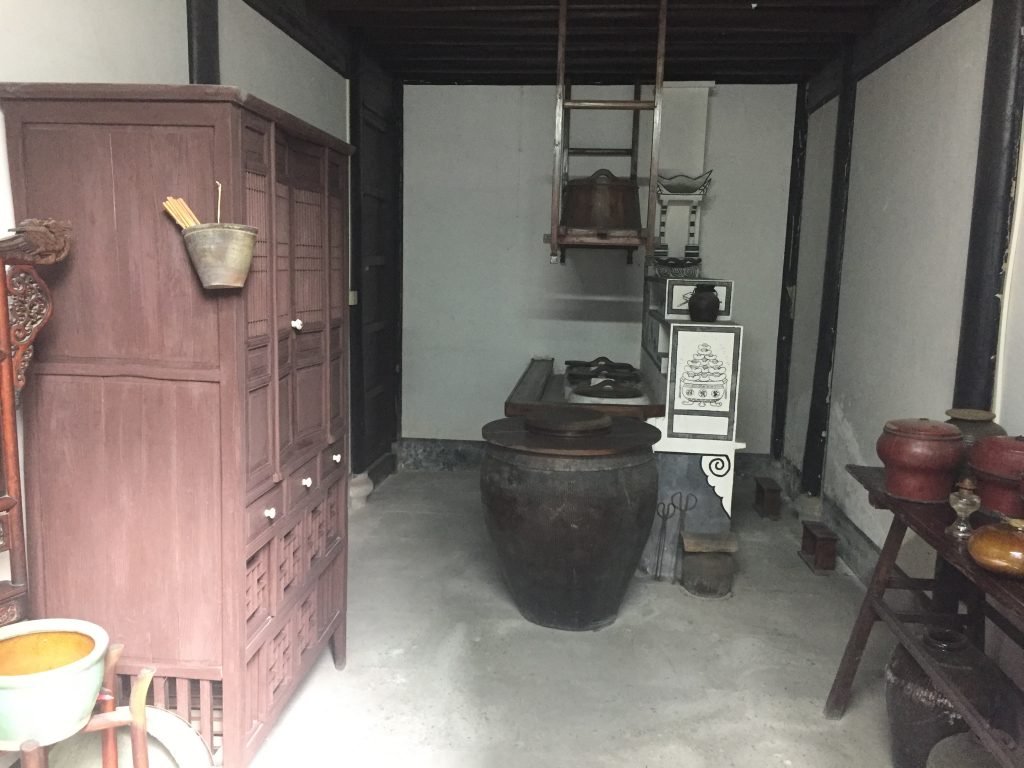 The above is showing the kitchen from that house.
The above is showing the kitchen from that house.
I’ll slip in one more non-museum from Shaoxing.
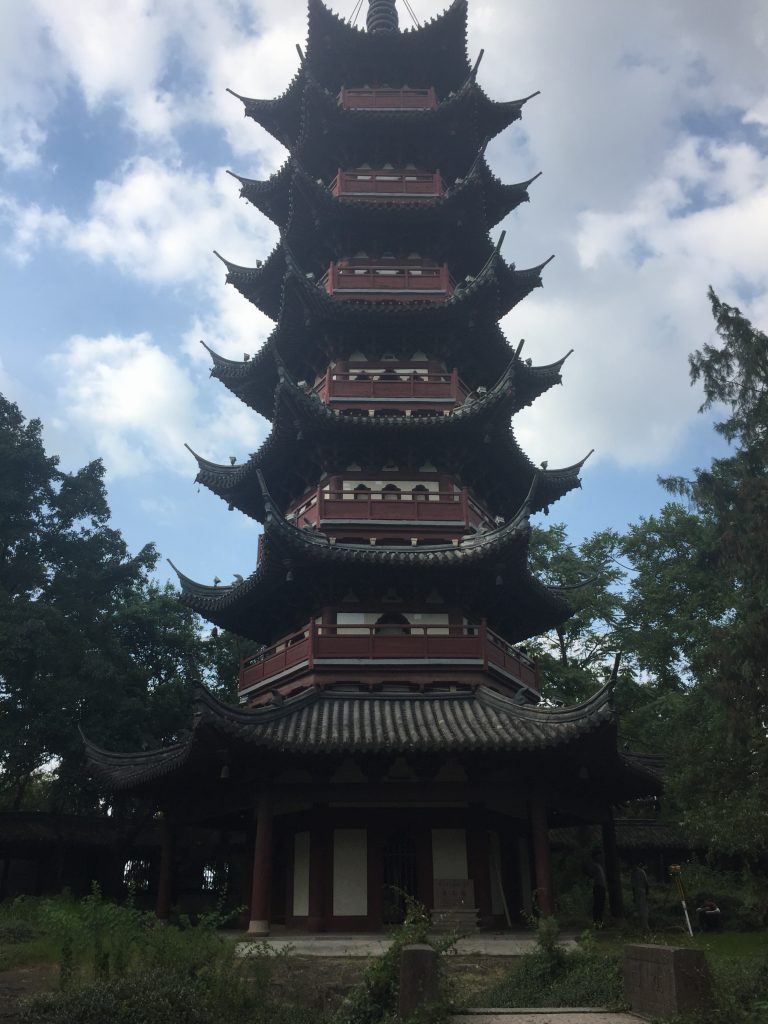 These are all over China though this is a particularly large one. You could also climb up inside it though you are correct to assume I did not go all the way to the top, too scary.
These are all over China though this is a particularly large one. You could also climb up inside it though you are correct to assume I did not go all the way to the top, too scary.
Next, onto Hangzhou and not a single museum! Maybe I can get away with showing an antique outboard motor on the wonderful West Lake.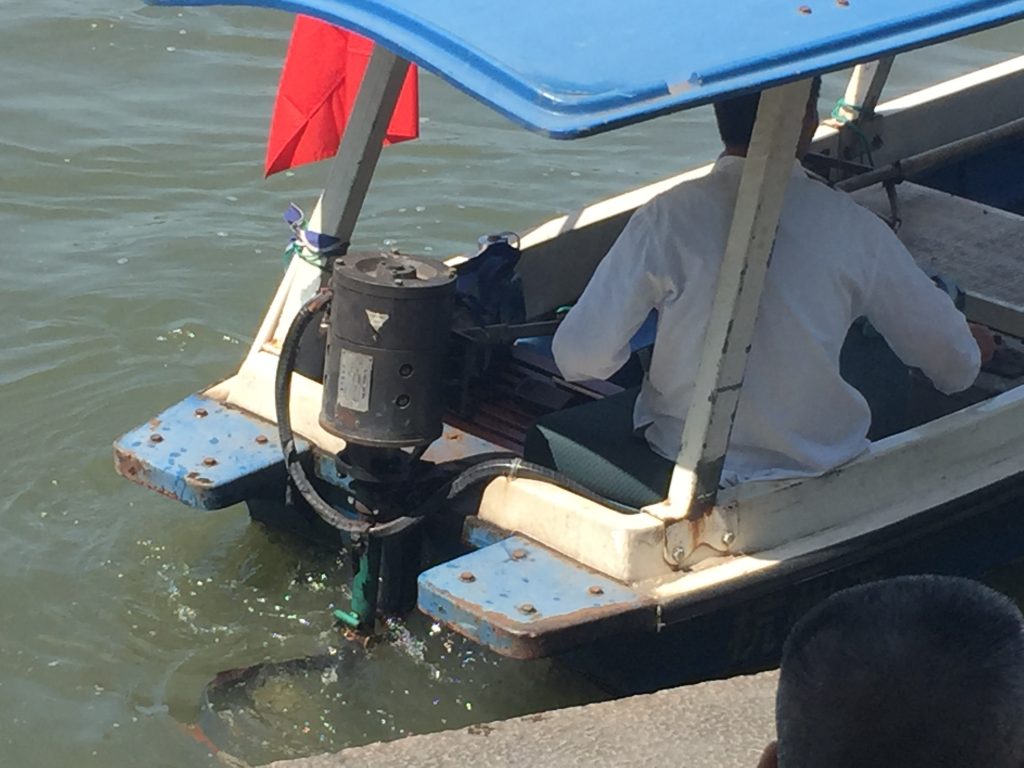
Suxhou did have a wonderful Silk Museum. The city is very close to Shanghai and had been a center for the industry. 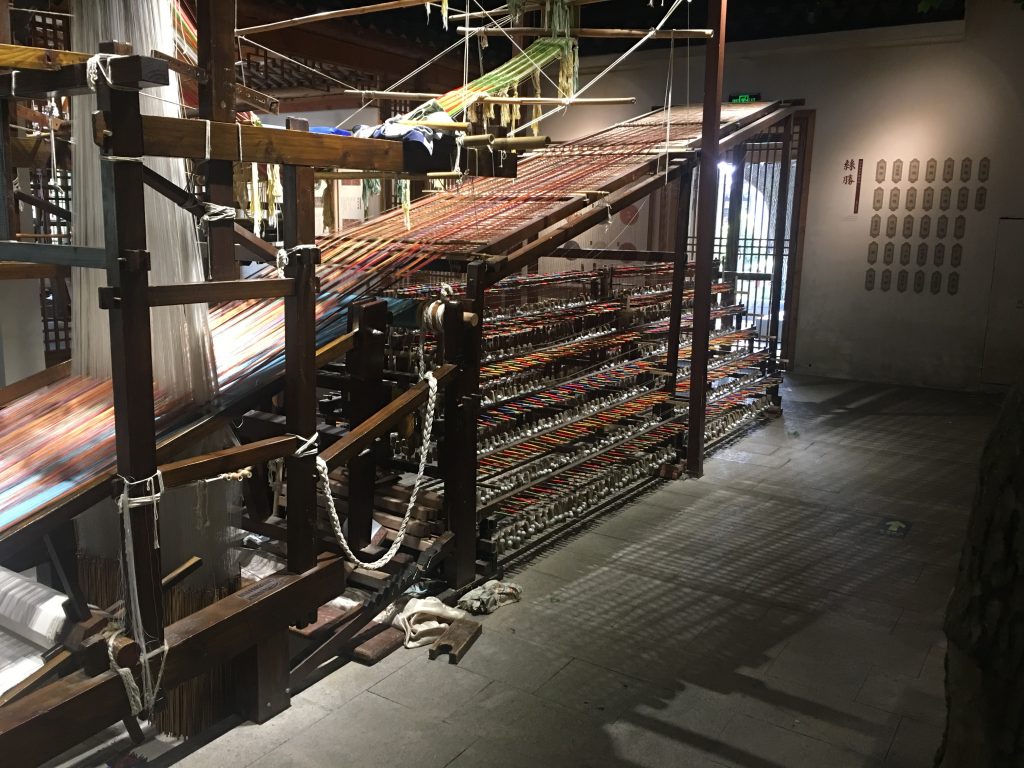 This museum did a good job presenting everything from the silk worms, what they ate, all the way up to monster machines lines this that wove the material.
This museum did a good job presenting everything from the silk worms, what they ate, all the way up to monster machines lines this that wove the material.
I took a side trip from Suxhou down to Tongli. It is one of the “Water Towns” that tour groups visit from Shangha. I had been in too many real towns in China that look like this to be impressed with this Disneyesk version. But they did have a museum.
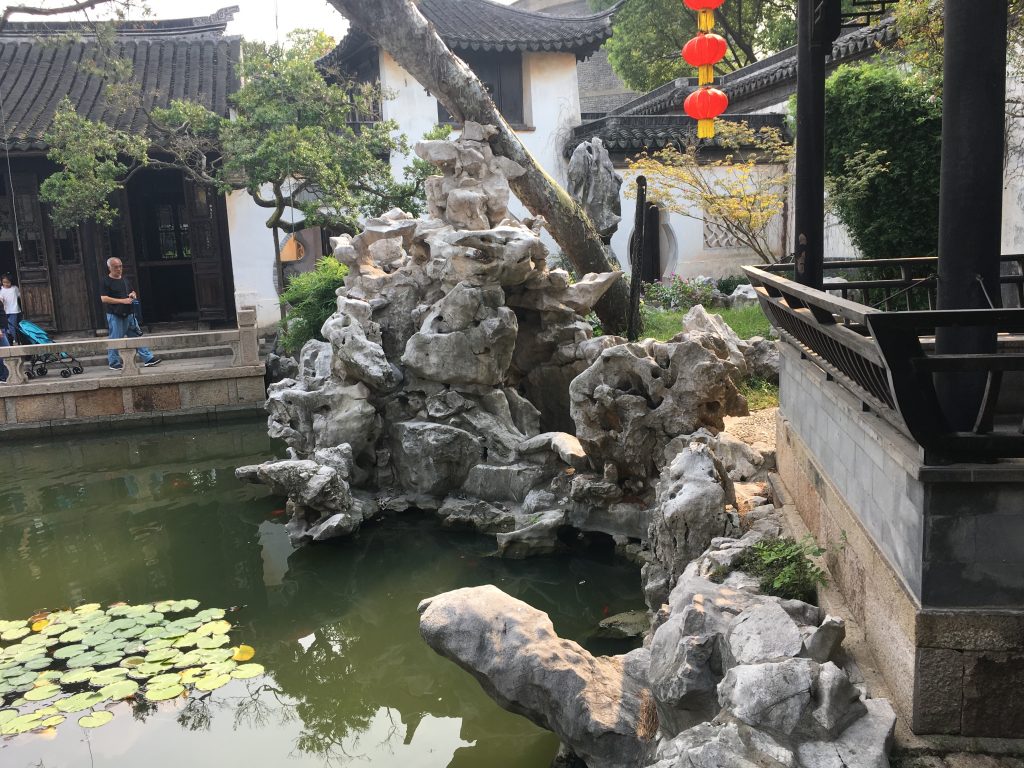 All of these House Museums have a garden and many have rock formations like the above. I have to admit that one of my motivations for a visit to Tongli was its Sex Museum. Closed. Moved Elsewhere. Oh well, maybe they would not have allowed me to take pictures anyway.
All of these House Museums have a garden and many have rock formations like the above. I have to admit that one of my motivations for a visit to Tongli was its Sex Museum. Closed. Moved Elsewhere. Oh well, maybe they would not have allowed me to take pictures anyway.
Finally, onto Shanghai and the end of the trip.
I only went to three museums in Shanghai. The first was a small and wonderful House Museum called Shikumen Open House Museum. Where as most of the House Museums I have been in have been from ancient times, this house is set up from 1920. 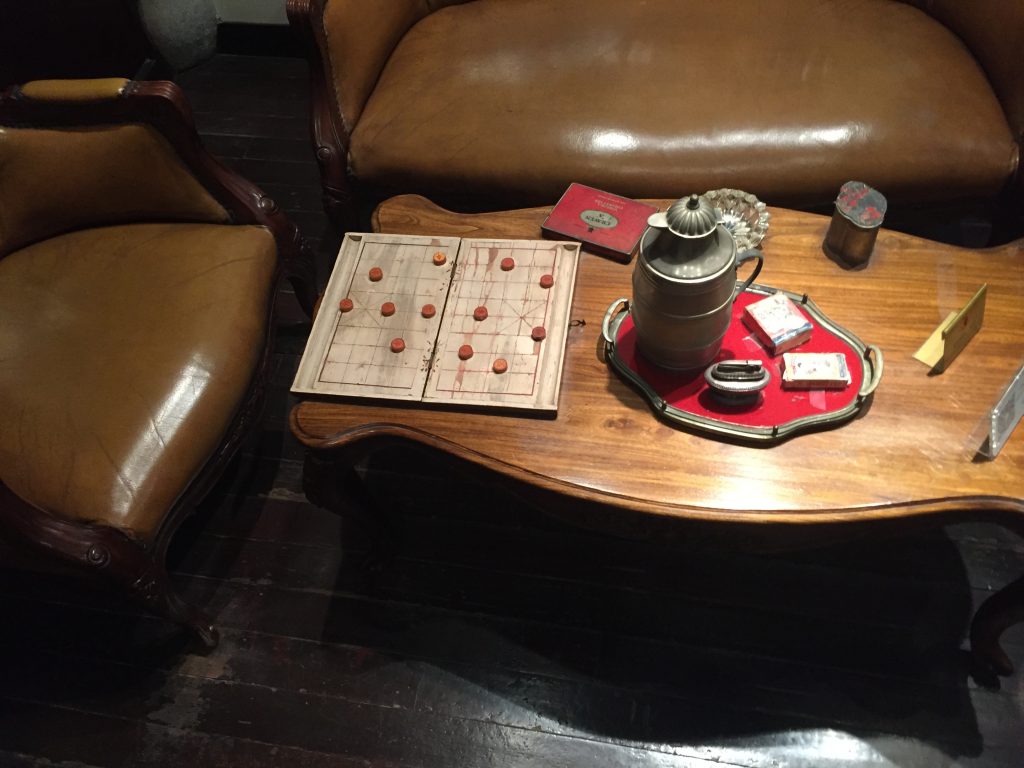 Even a Chinese chess game set out in the living room.
Even a Chinese chess game set out in the living room.
The best Shanghai Museum was The Propaganda Poster Art Center. If you are even in town, you have to go. First, it is harder than hell to find. Off the beaten path and then around 3 corners in the cellar of nummber 4 building of the apartment grouping. Second, it is just 5 cinder block rooms with posters on the walls. But what posters! I was not allowed to take pictures but here is the copy poster that I bought.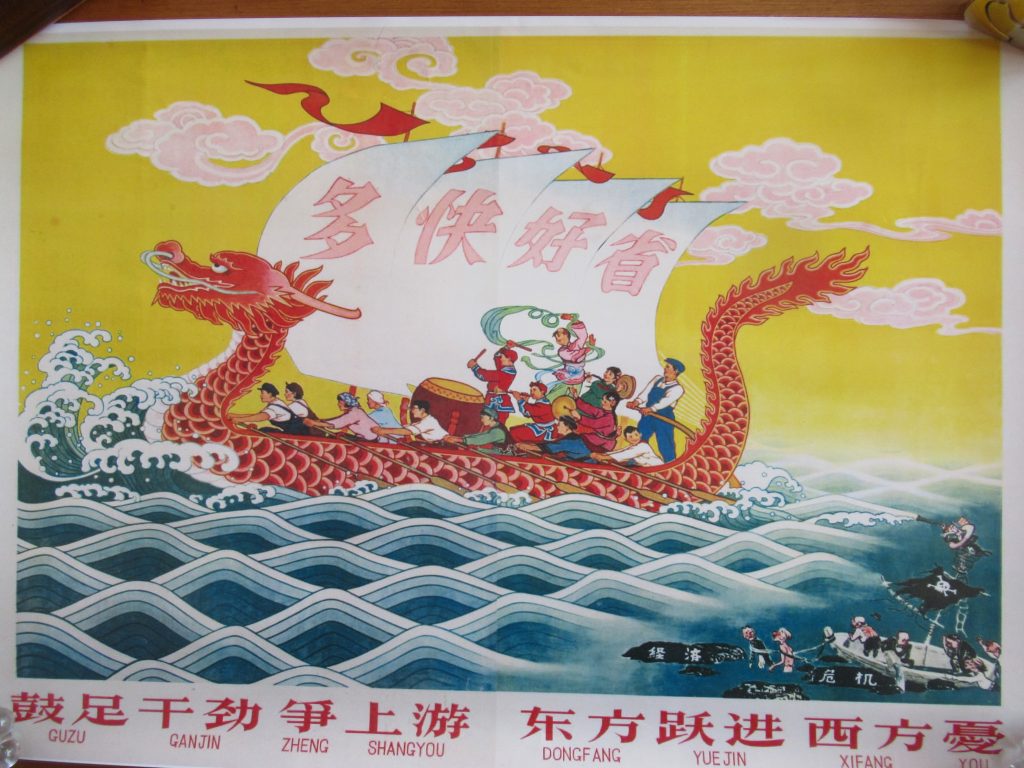 Not only wonderful, and you can see poor Uncle Sam in the small row boat to the bottom right, but totally wrong. Note the Bow of the boat and the helmsmen with a steering oar in the back. But wait, look at the rowers. Are they about to pull on their oars? Which direction are they rowing in. Oh well, details.
Not only wonderful, and you can see poor Uncle Sam in the small row boat to the bottom right, but totally wrong. Note the Bow of the boat and the helmsmen with a steering oar in the back. But wait, look at the rowers. Are they about to pull on their oars? Which direction are they rowing in. Oh well, details.
One last museum called the Liuli China Museum. Wonderful glass sculptures. 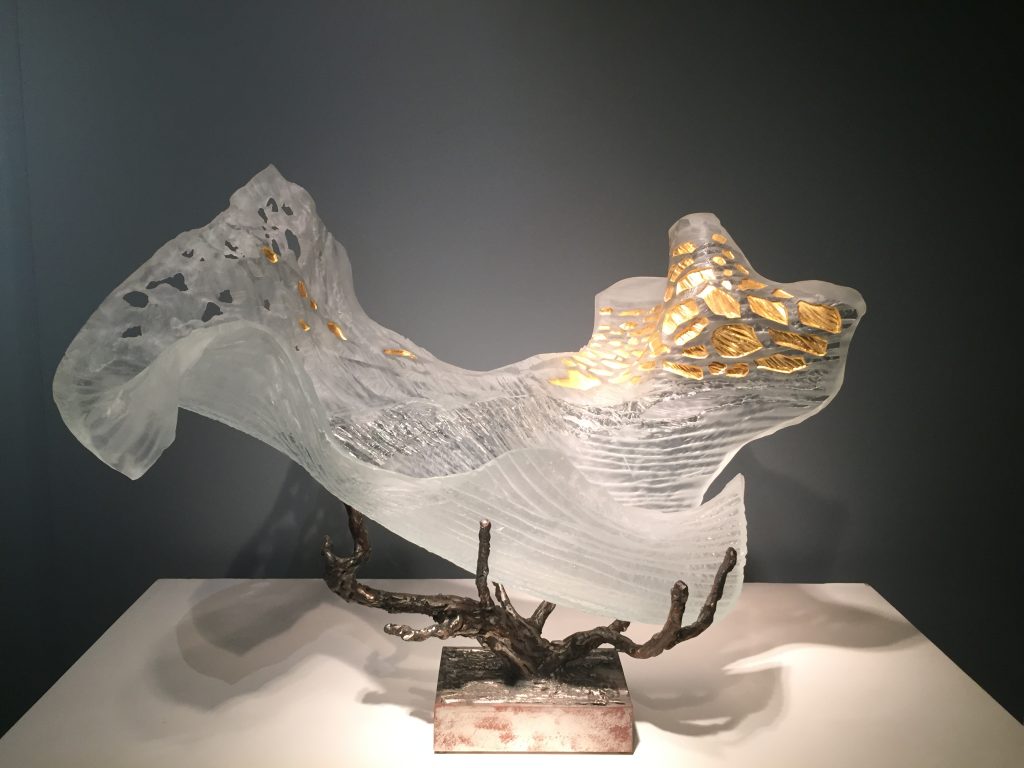 You get the idea.
You get the idea.
